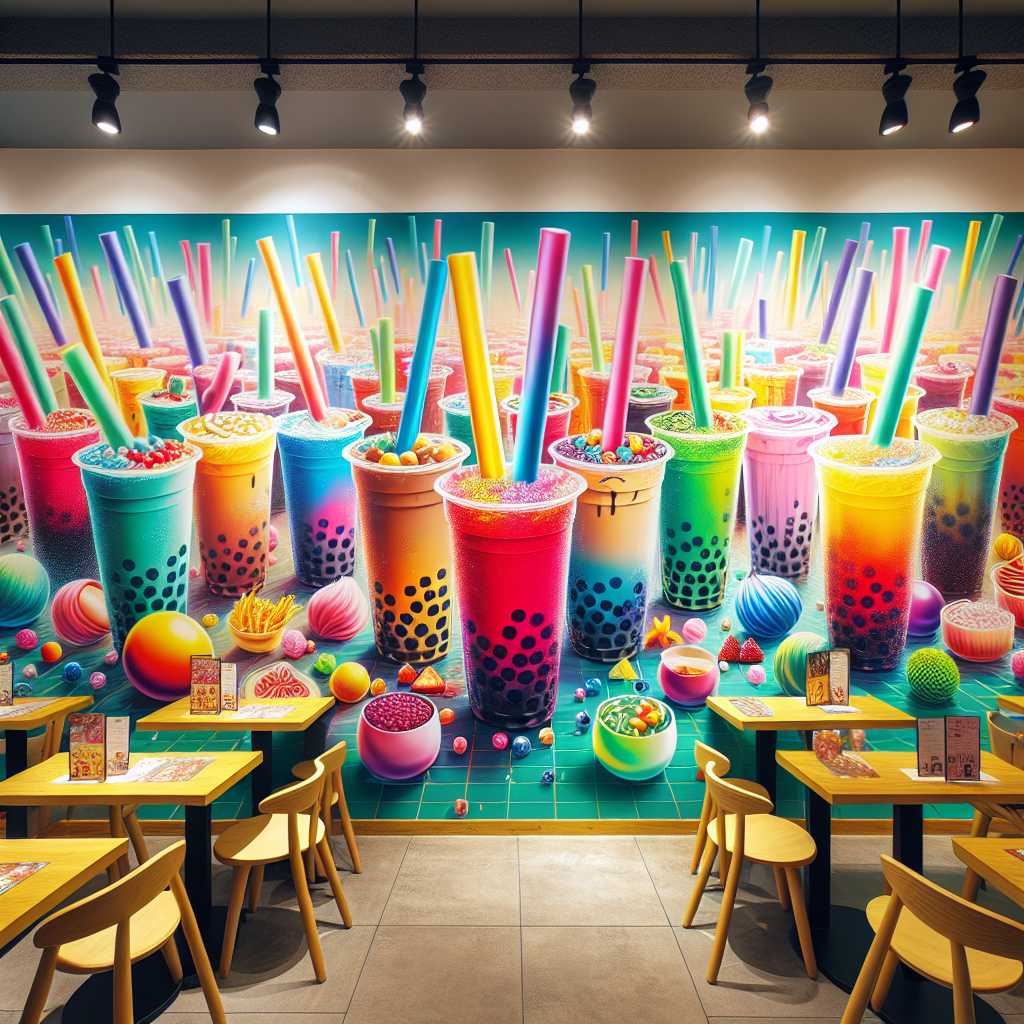The Cultural Phenomenon of Boba: A Deep Dive into Bubble Tea’s Global Popularity
Bubble tea, also referred to as boba, has transcended its place as a mere beverage to become a global cultural phenomenon. It is broadly characterized by its distinctive tapioca pearls and the variety of flavors available, from milk-based to fruit teas. Boba tea has garnered a massive following across many countries, with fans who delight in its unique taste and textural experience. This deep dive into boba will explore its origins, evolution, the variety it offers, associated health considerations, and the future of this beloved drink.
Origins and History of Boba Tea
From Taiwanese Innovation to World Beverage:
Boba tea’s origins date back to the Taiwanese tea culture of the 1980s. The origins of the drink are often contended with various stories attributing it to different shops and creators. However, the most essential aspect remains unequivocal — the creation of a beverage that paired sweetened black tea with ‘pearls,’ or balls made from tapioca starch. This innovation turned an ordinary milk tea into something exceptional that appealed not just to our taste buds but added a fun and chewy texture unique to boba.
Spreading Through East Asia to the World:
The popularity of bubble tea quickly spread through East Asia. By the 1990s and 2000s, dedicated boba tea shops popped up throughout China, Hong Kong, South Korea, and Japan. With increasing globalization and diasporic movements, boba shops began opening outside of Asia in North America, Australia, Europe, and beyond.
Evolution of Taste and Aesthetic Sense in Boba Culture
From Simple Milk Teas to Innovative Flavors:
Early iterations of bubble teas were straightforward concoctions involving black tea, milk, sweeteners, and tapioca pearls. Contemporary boba beverages have ventured into a wide range of flavors including taro, matcha, strawberry, mango, lychee as well as offering jelly-like toppings such as grass jelly or coconut jellies complementing or even substituting for tapioca pearls.
Instagrammable Moments Spark Greater Interest:
In addition to taste innovations, bubble tea also rode the wave of social media trends. Its signature aesthetic—colorful layers in transparent cups adorned with chunky straws—became fodder for countless Instagram posts and TikTok videos. Brands invest heavily in branding and shop design to create not just a drink but an experience that consumers can boast about online.
Health Considerations and Dietary Preferences
Navigating Sugar Levels and Caloric Content:
Bubble tea has faced criticism for its typically high sugar content which can contribute to empty calorie intake. Prevalent among teenagers and young adults, who might be less attentive to dietary concerns, this issue has led many providers to offer customizable sugar levels to cater to more health-conscious drinkers.
Gluten-Free and Vegan Alternatives:
To increase inclusivity for various diets such as gluten sensitivities or veganism, several shops now promote using brown sugar syrup or honey as sweeteners, as well as non-dairy milk alternatives like almond or soy.
Impact on Agriculture and Environment:
Additionally, as consciousness about environmental impacts gains traction among consumers, many bubble tea establishments have begun adopting eco-friendly practices such as biodegradable straws or sourcing ingredients sustainably.
The Business of Boba: Economics and Expansion
Franchising and Economic Growth:
The commercial success of boba is undeniable with chains like Chatime, Kung Fu Tea, and Gong Cha operating storefronts internationally. Franchising has become a formidable business avenue for expansion whereby local entrepreneurs can partake in the trend by opening respective chain outlets. Many of these brands have gained foothold by tailoring their menu items to regional tastes while maintaining their brand identity.
Local Shops and Cultural Integration:
Furthermore, local boba establishments act as cultural integrators within diverse communities as people from varying backgrounds immerse themselves in an element of East Asian culture through auspiciously associated items such as ‘lucky’ lychee flavors or names inspired by Asian mythology.
Future Trends in Boba Culture
Innovations Will Continue Shaping Profiles:
With technology advancing rapidly in food industries leading to innovations like artificial intelligence assisted customer service and drinks tailored to individual health needs or flavor profiles – the future of boba tea looks vibrant.
More Than Beverage: A Lifestyle Element:
Boba’s association with culture, relaxation, and social connection will likely expand to collaborations with other industries such as entertainment where special-edition flavors might be linked with movie premieres or music festivals.
Towards Sustainability:
Further strides towards environmentally sound practices are expected due to increasing consumer demand prodding along with private sector ingenuity and potentially government regulations surrounding single-use plastics.
*Notes:*
Image Description: A modern boba tea shop interior filled with vibrant decor – brightly colored walls sit adorned with flashy beverage advertisements showcasing various bubble teas in transparent cups with oversized colorful straws poking out the top and visible layers of colorful ingredients within each cup.
